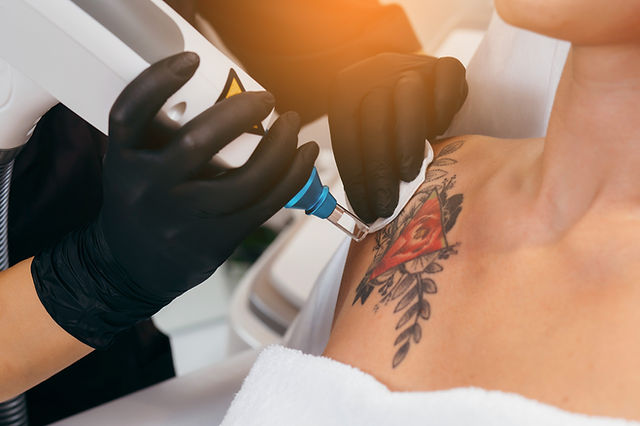 Content Gap Analysis – Find What Competitors Are Missing!
Content Gap Analysis – Find What Competitors Are Missing!
How to Handle Complications During Laser Tattoo Removal in Dubai
Written by healthcareblog » Updated on: October 28th, 2024
Laser tattoo removal is a popular procedure for those looking to erase unwanted ink. While the majority of procedures go smoothly, complications can arise. Understanding these complications and knowing how to manage them is crucial for achieving the best results and ensuring a safe process.
Understanding Potential Complications
Tattoo Removal Dubai involves using high-intensity laser beams to break down the ink particles in the skin. These particles are then absorbed and eliminated by the body's immune system. While the process is generally effective and safe, complications can occur. These complications may include skin irritation, infection, changes in skin pigmentation, and scarring.
Skin Irritation and Sensitivity
One of the most common issues following laser tattoo removal is skin irritation. Patients may experience redness, swelling, or discomfort in the treated area. This reaction is usually temporary and can be managed with over-the-counter anti-inflammatory medications and topical creams. It's essential to avoid scratching or picking at the treated area to prevent further irritation or infection.

Changes in Skin Pigmentation
Laser tattoo removal can sometimes lead to changes in skin pigmentation. The treated area may become lighter or darker than the surrounding skin. This can be a result of the laser's effect on the melanin in the skin. In many cases, pigmentation changes are temporary and may resolve on their own. However, if significant pigmentation changes occur, it's advisable to consult with a dermatologist to explore possible treatments.
Scarring
Scarring is a less common but more serious complication that can occur with laser tattoo removal. Scarring may be more likely in individuals with darker skin tones or those who experience excessive inflammation or infection. To minimize the risk of scarring, it’s crucial to follow all aftercare instructions carefully. This includes keeping the treated area moisturized, avoiding sun exposure, and not engaging in activities that could cause trauma to the skin.
Managing Complications
Addressing complications effectively requires prompt and appropriate action. For skin irritation, using cold compresses and applying soothing creams can help alleviate discomfort. If signs of infection, such as increased redness, swelling, or pus, are observed, seeking medical advice immediately is crucial. For pigmentation issues, patience is often key, as the skin may gradually return to its normal color. In cases where pigmentation changes are persistent, a dermatologist can offer treatments to improve skin appearance.
Preventative Measures
Preventing complications is an essential aspect of laser tattoo removal. Prior to the procedure, it's important to consult with a qualified practitioner who can assess your skin type and discuss potential risks. Following pre-treatment instructions, such as avoiding sun exposure and not using certain skincare products, can also help reduce the risk of complications.
During and after the procedure, adherence to aftercare guidelines is vital. This includes protecting the treated area from the sun, avoiding activities that may irritate the skin, and using prescribed skincare products as directed.
Long-Term Care and Follow-Up
Ongoing care and follow-up appointments are important for ensuring that any complications are managed effectively. Regular check-ins with your practitioner can help monitor the healing process and address any concerns that arise. It’s also beneficial to maintain a healthy skincare routine to support skin healing and overall health.
Conclusion
Laser tattoo removal is a procedure with a generally high success rate, but understanding and managing potential complications is key to achieving the best results. By being aware of possible issues such as skin irritation, infection, pigmentation changes, and scarring, and taking proactive measures to address them, you can ensure a smoother removal process and optimal outcomes. Regular follow-ups and adherence to aftercare instructions further contribute to a successful tattoo removal journey.
Disclaimer: We do not promote, endorse, or advertise betting, gambling, casinos, or any related activities. Any engagement in such activities is at your own risk, and we hold no responsibility for any financial or personal losses incurred. Our platform is a publisher only and does not claim ownership of any content, links, or images unless explicitly stated. We do not create, verify, or guarantee the accuracy, legality, or originality of third-party content. Content may be contributed by guest authors or sponsored, and we assume no liability for its authenticity or any consequences arising from its use. If you believe any content or images infringe on your copyright, please contact us at [email protected] for immediate removal.
Copyright © 2019-2025 IndiBlogHub.com. All rights reserved. Hosted on DigitalOcean for fast, reliable performance.







